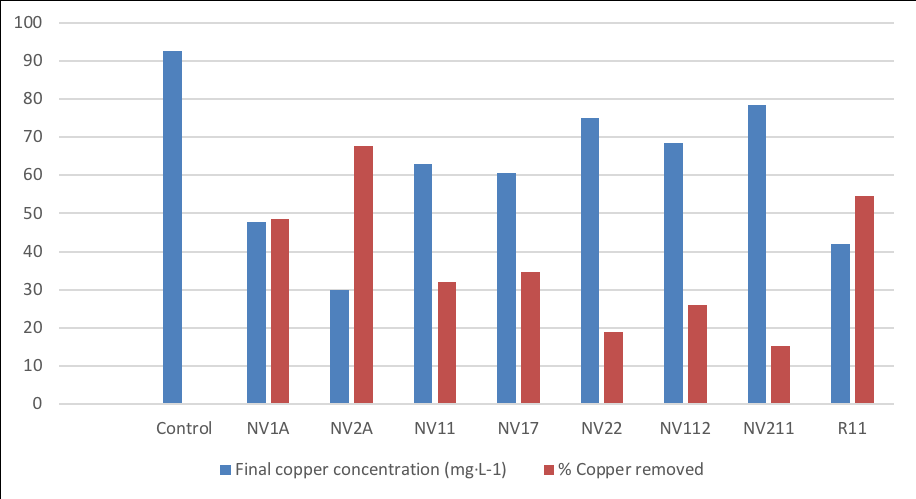VOLUME 11 (Supplement)

Philipp. Sci. Lett. 2018 11 (Supplement) 018-027
available online: July 13, 2018
*Corresponding author
Email Address: lcvillegas@up.edu.ph
Date Received: February 26, 2018
Date Revised: May 20, 2018
Date Accepted: May 28, 2018
ARTICLE
Removal of heavy metals from aqueous solution by biofilm-forming bacteria isolated from mined-out soil in Mogpog, Marinduque, Philippines
by Lucille C. Villegas1,*, Arlene L. Llamado1, Kristine V. Catsao2, and Asuncion K. Raymundo1
1Microbiology Division, Institute of Biological Sciences, College of Arts and Sciences,
University of the Philippines Los Baños, Laguna 4031, Philippines
2Euromed Laboratories Philippines, Inc., Dasmarinas, Cavite, Philippines
University of the Philippines Los Baños, Laguna 4031, Philippines
2Euromed Laboratories Philippines, Inc., Dasmarinas, Cavite, Philippines
Heavy metal pollution evokes scary health scenarios which should prompt moves for proper treatment to prevent further heavy metal contamination and spread. In this study, heavy metals from synthetic solution were removed through bisorption using biofilm-forming bacteria. Eight out of 90 bacterial isolates obtained from mined-out soil in Mogpog, Marinduque exhibited biofilm formation and tolerance to Cu, Pb, Zn and Cd. Isolates NV1A and NV2A formed the thickest biofilm and isolate NV1A showed the highest degree of tolerance to the four heavy metals. All eight isolates reduced the Cu content with 15-68% efficiency using 100 mg·L-1 Cu in solution at six hours of contact time. The amount of Cu removed by five isolates (NV1A, NV2A, NV11, NV22, and NV112) decreased when 10 mg·L-1 Cu, 0.5 mg·L-1 Cd, 5 mg·L-1 Pb, and 200 mg·L-1 Zn were present in aqueous solution. In contrast, amounts of Cu removed by the isolates NV17 and R11 from a multimetal solution increased compared to that of the Cu only solution while the amount remained the same for isolate NV211. Identification of the isolates by 16s rDNA sequencing revealed that NV1A, NV22 and NV112 have 98 to 100% sequence similarities with Rhodococcus equi and R. opacus; NV2A, 100% sequence similarity with Pseudomonas aeruginosa; R11, 99% sequence similarity with Bacillus megaterium; NV11, 97% sequence similarity with Solibacillus silvestris and Lysinibacillus sphaericus; NV211, 97% sequence similarity with Enterococcus faecium and NV17, 96% sequence similarity with three species of Bacillus. The isolates identified as promising should be studied further for potential application in the removal of heavy metals in actual industrial wastewaters. Any emerging technology from such studies that would prove successful could lead to significantly lesser cost of heavy metal remediation.
© 2025 SciEnggJ
Philippine-American Academy of Science and Engineering